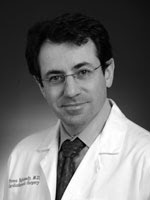We thought it was time to start Trista's blog since many of you continue to ask about her. We are still wrapping our arms around everything she has been through recently with her open heart surgery at 12 days old. She is home and doing really well. We are still having issues with her severe reflux - the doctors are hoping she grows out of it...if she doesn't, surgery will be the next route to correct some of her GI issues.
She also had a repeat hearing test today back at Children's. The results are still showing some mild hearing loss in her left ear and moderate to severe in her right ear. This could still be due to some fluid build-up from laying for such a long period of time after her surgery. We now have to take her to an Ear Nose & Throat Doctor to see what they think. Just one more specialist to add to the mix! :)
I know her heart condition is still a little "fuzzy" for everyone, so I wanted to take a minute and explain exactly what she has.
What Is Tetralogy of Fallot?
Tetralogy of Fallot occurs in about 5 out of every 10,000 babies. There is no known reason for this. It just happens. Tetralogy of Fallot has four key features.
* Large Ventricular Septal Defect (VSD) - A VSD is a hole in the part of the septum that separates the ventricles—the lower chambers of the heart. The hole allows oxygen‑rich blood to flow from the left ventricle into the right ventricle instead of flowing into the aorta, the main artery leading out to the body.
* Pulmonary Stenosis - This is a narrowing of the pulmonary valve and the passageway through which blood flows from the right ventricle to the pulmonary arteries. Normally, oxygen-poor blood from the right ventricle flows through the pulmonary valve into the pulmonary arteries and out to the lungs to pick up oxygen. In pulmonary stenosis, the heart has to work harder than normal to pump blood and not enough blood can get to the lungs.
* Right Ventricular Hypertrophy - This is when the right ventricle thickens because the heart has to pump harder than it should to move blood through the narrowed pulmonary valve.
* Overriding Aorta - This is a defect in the location of the aorta. In a healthy heart, the aorta is attached to the left ventricle, allowing only oxygen-rich blood to go to the body. In Tetralogy of Fallot, the aorta is between the left and right ventricles, directly over the VSD. As a result, oxygen‑poor blood from the right ventricle can flow directly into the aorta instead of into the pulmonary artery to the lungs.
Together, these four defects mean that not enough blood is able to reach the lungs to get oxygen, and oxygen-poor blood flows out to the body. Tetralogy of Fallot must be repaired with open-heart surgery, either soon after birth or later in infancy.
On March 11, 2009, Trista had a complete repair to correct her heart defects. To do a complete repair, the surgeon closed the ventricular septal defect with a patch and opened the right ventricular outflow tract by removing some thickened muscle below the pulmonary valve, repairing the pulmonary valve and enlarging the peripheral pulmonary arteries that go to both lungs. So far, so good!
Will Trista Need More Surgeries?
After the first complete repair, residual problems may require the child to have more open-heart surgeries. It is very common for there to be 2 more open heart surgeries or possibly more. In Trista's case, she will most likely need another when she is around 15 years of age.
Tuesday, May 19, 2009
Subscribe to:
Post Comments (Atom)




























No comments:
Post a Comment